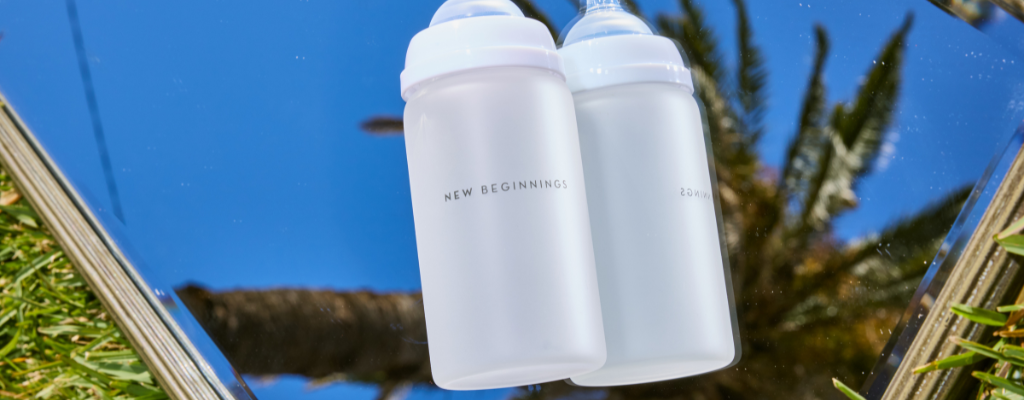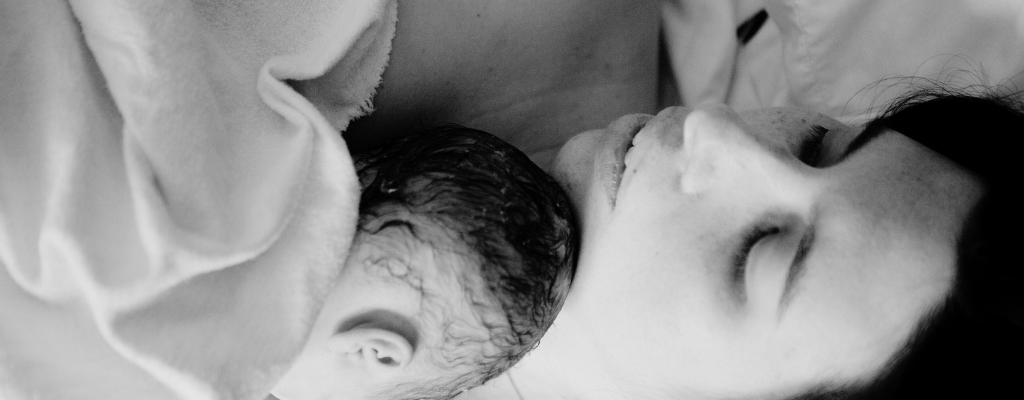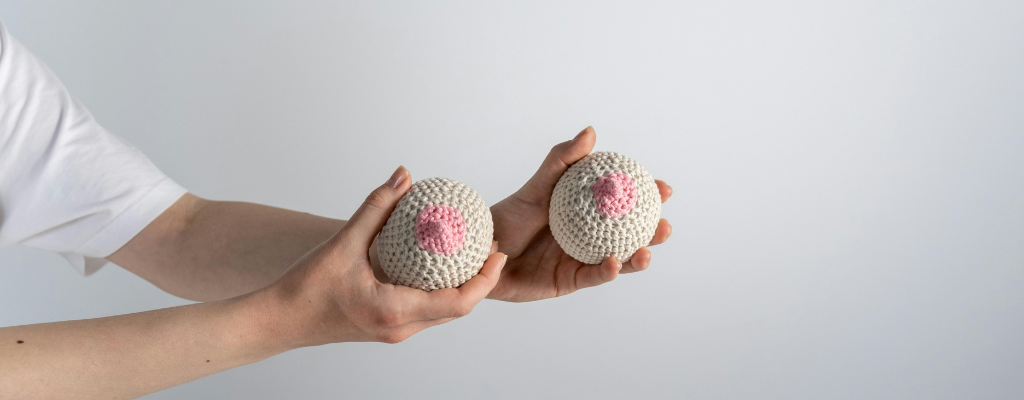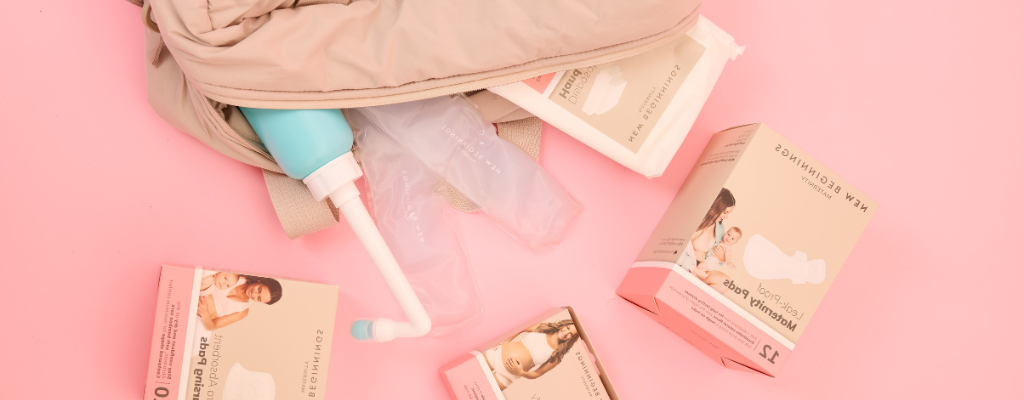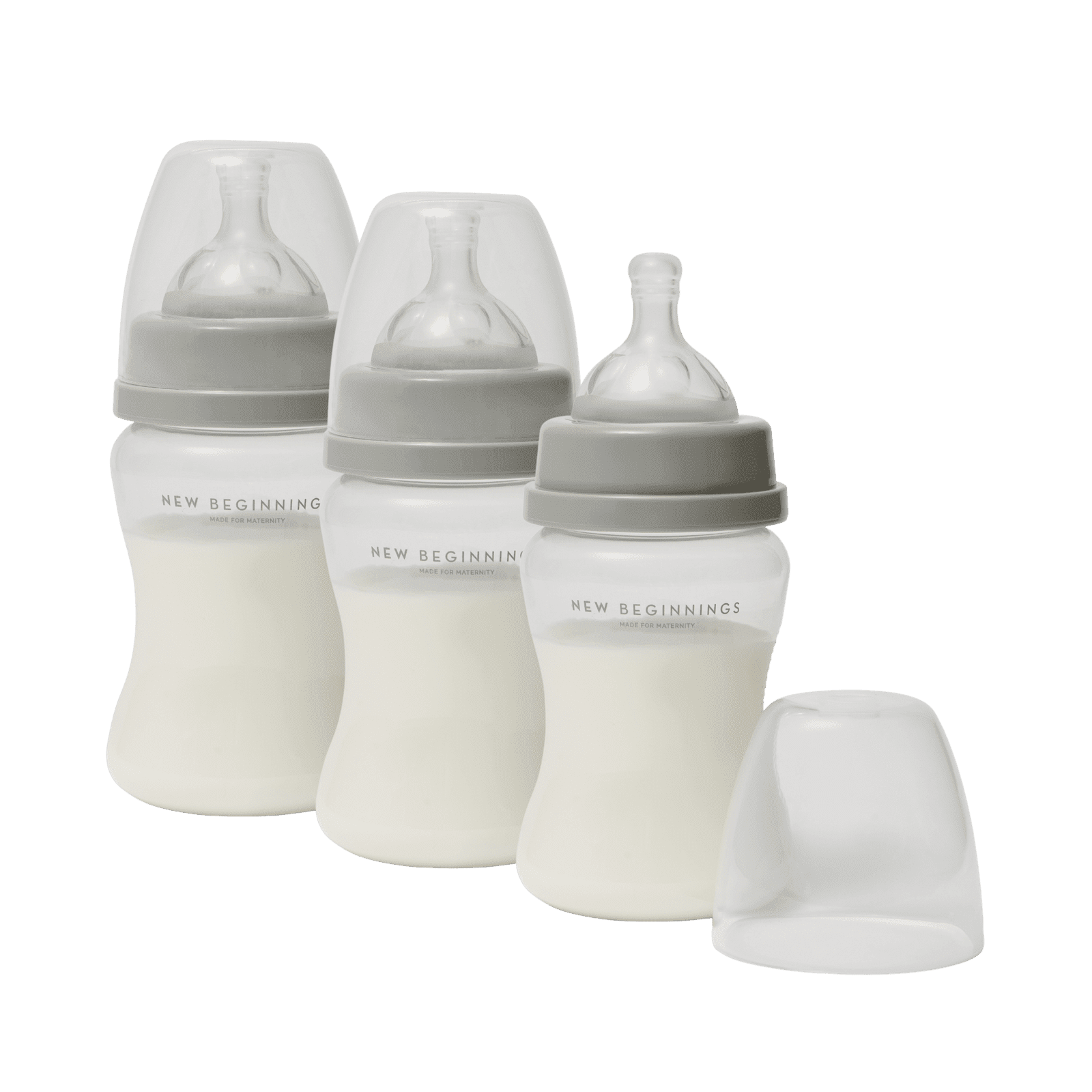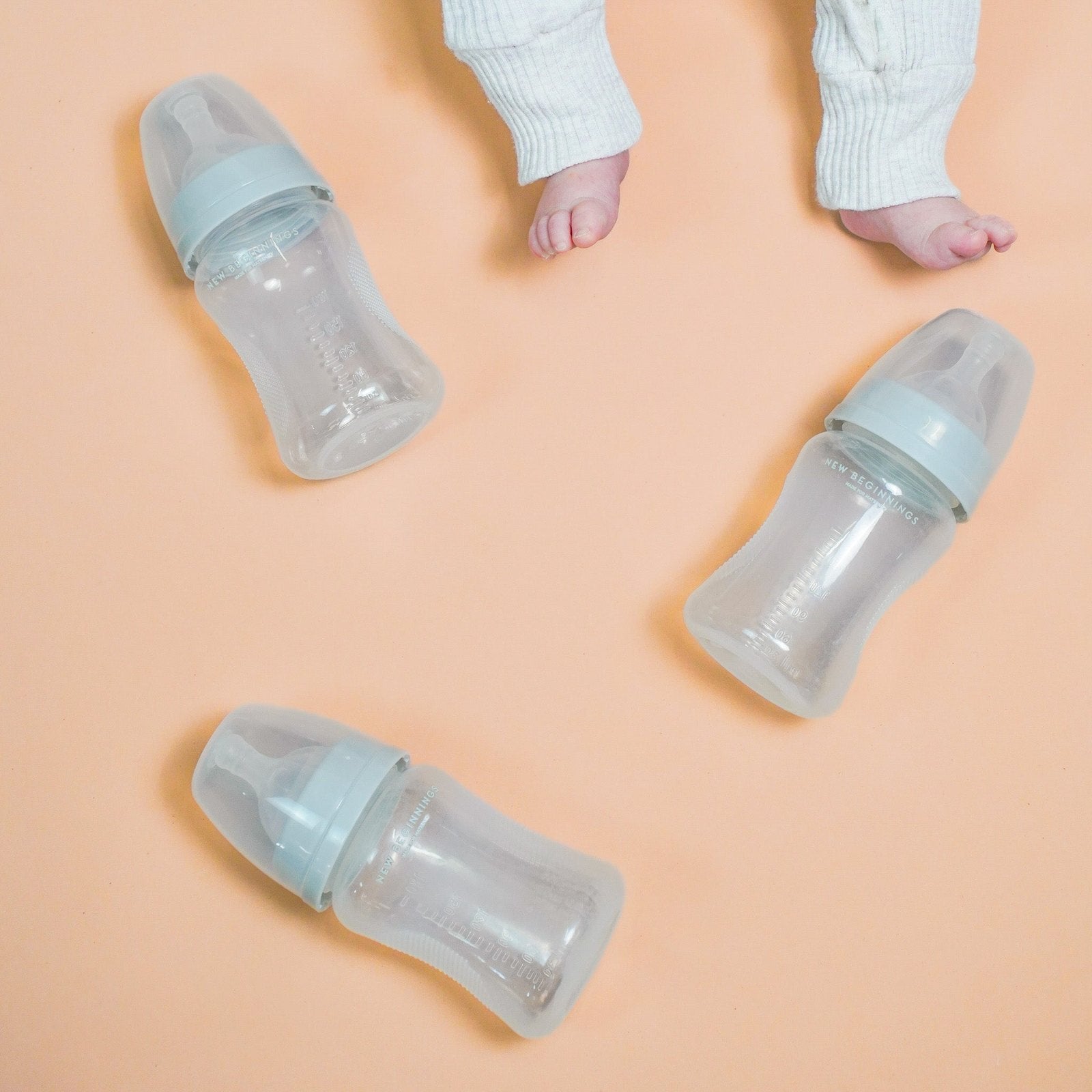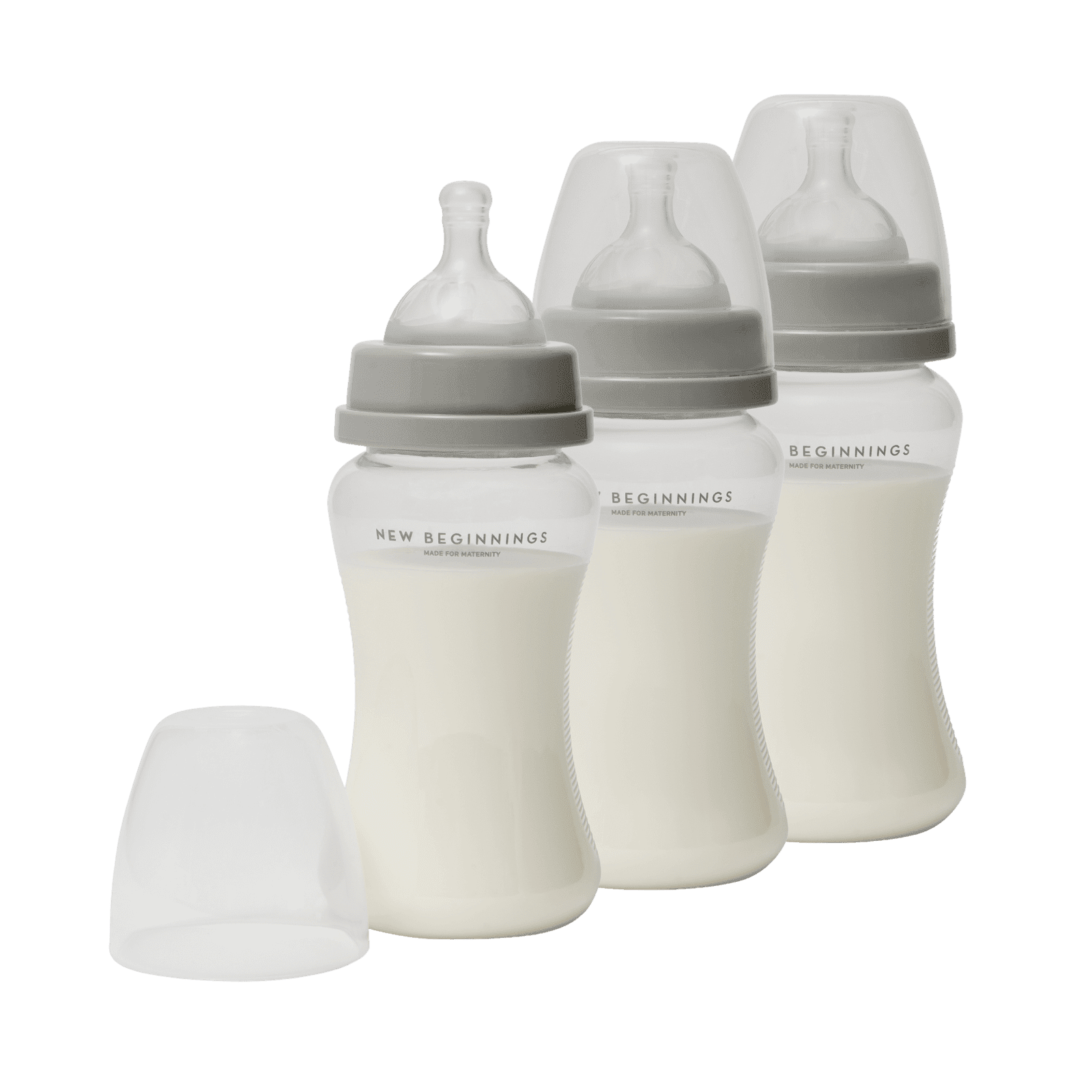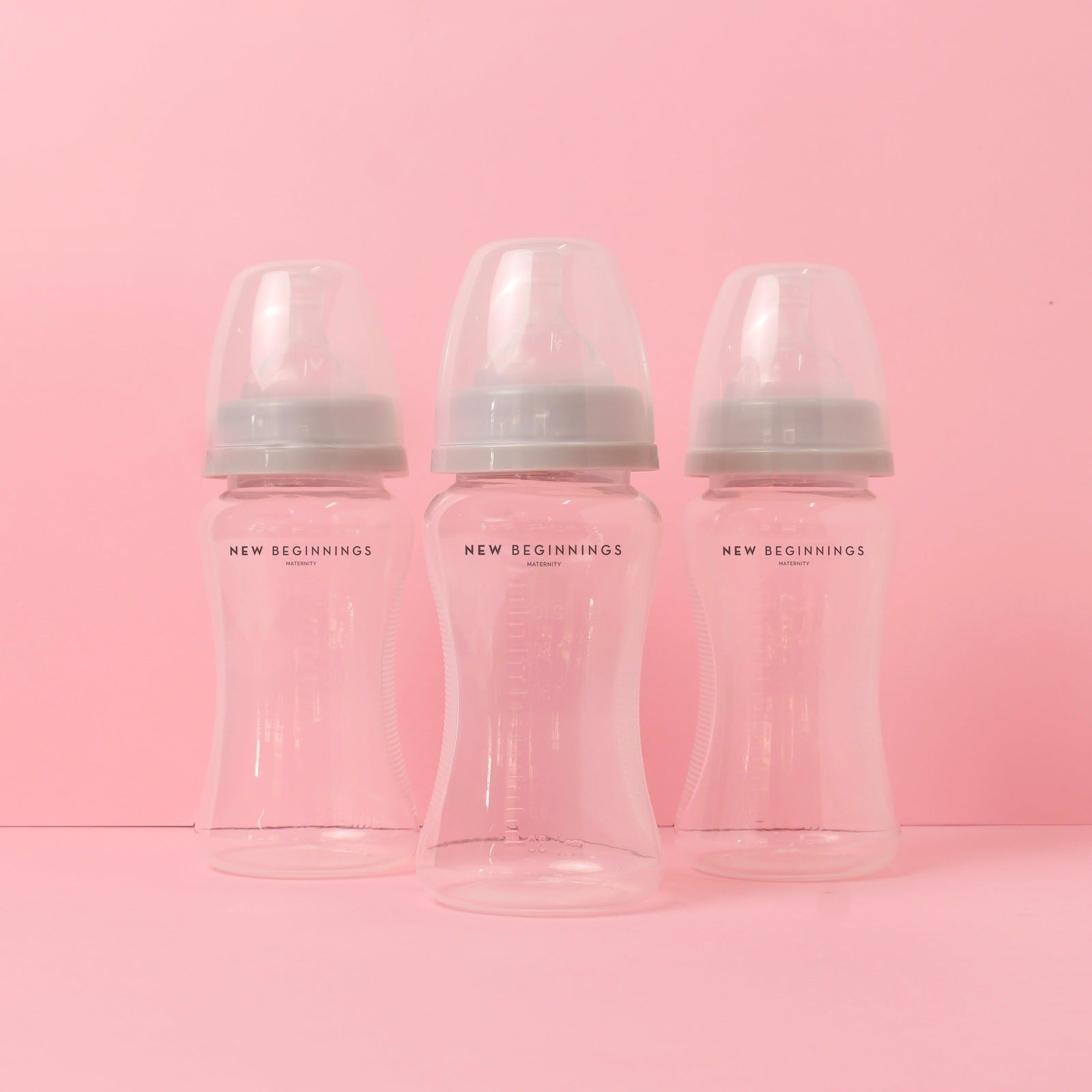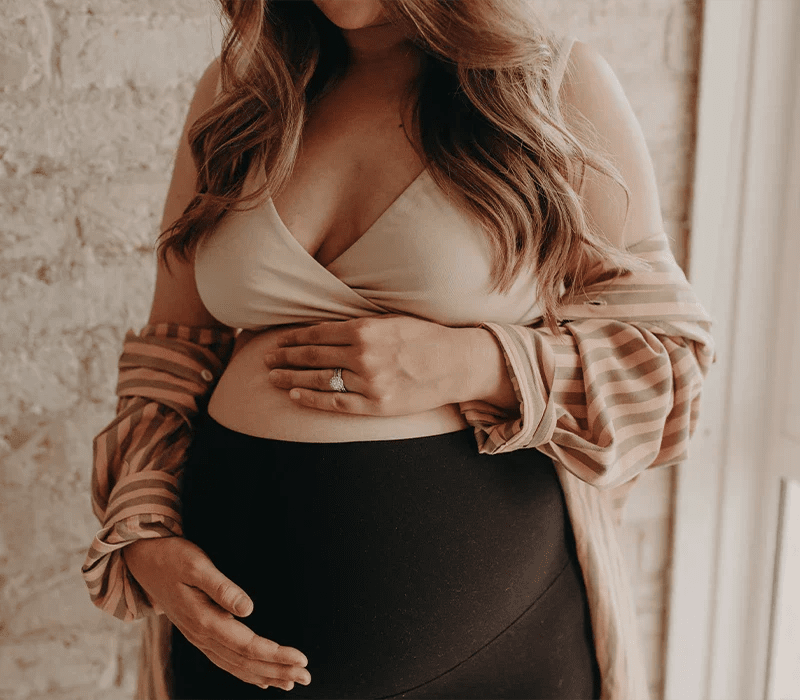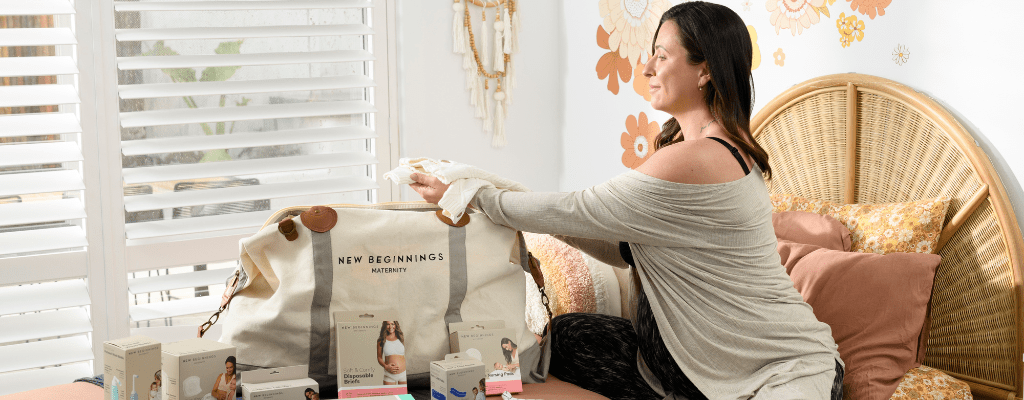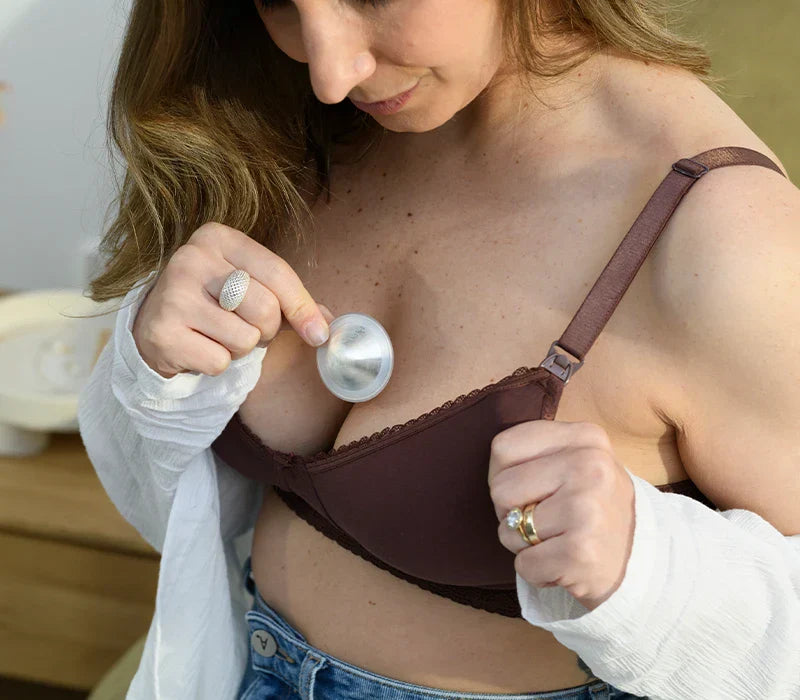Why Silicone-Coated Glass Might Just Win Them All
When I first started looking at baby bottles, I thought the choice was simple, glass or plastic. Turns out, there’s a lot more to it. And now there’s a new player in the mix: silicone-coated glass bottles.
Between night feeds, sterilising, and the occasional bottle drop (we’ve all been there), you need something that’s safe, practical, and designed to make feeding just a little bit easier.
Here’s what I learned along the way.
Plastic Bottles: Lightweight But Not Perfect
Plastic bottles are everywhere and to be fair, they do have their perks. Plastic bottles are light, affordable, and easy to toss into the nappy bag when you’re heading out the door. For those middle-of-the-night feeds, they’re convenient and quick to handle (especially when you’ve only got one eye open).
But like most shortcuts, they come with a few trade-offs.
Plastic Bottle Perks
- Lightweight and easy for on-the-go feeds
- Budget-friendly and widely available
- Won’t shatter if dropped (a big plus for tired hands)
- Comes in a wide range of sizes and styles
Plastic Bottle Trade-Offs
- Can scratch, cloud, or hold odours over time
- Even BPA-free plastics may release microplastics when heated
- Less durable and often needs replacing sooner
- Not as eco-friendly and most end up in landfill
Plastic bottles absolutely have their place, especially if you’re looking for something lightweight and low-stress in the newborn haze. But for long-term use, or if you’re keen on something cleaner and more durable, glass (or glass with a silicone coating) is worth the switch.
Glass Bottles: Clean, Classic & Chemical-Free
Glass bottles have been around forever and for good reason. They’re made from borosilicate glass, which is incredibly durable, heat-safe, and easy to sterilise. It’s the same type of glass used in medical equipment, which always gives me peace of mind.
Why I like glass bottles:
- Free from BPA, toxins, and microplastics
- Doesn’t hold onto smells or stains
- Hygienic and easy to keep clean
- Lasts longer than plastic and is recyclable
The only downside? They can be heavier and, if dropped, they might not survive the fall, though that’s where silicone-coated glass bottles change the game.

The Best of Both Worlds: Silicone-Coated Glass Bottles
This is a game-changer. The New Beginnings Glass Bottle with Outer Silicone Coating combines the purity of glass with a little extra protection (and sanity).
It’s still borosilicate glass at the core, but wrapped in a soft silicone layer that helps with grip and makes it more resistant to drops and bumps.
So you get all the benefits of glass, without the “please don’t break” anxiety.
Why it works so well:
- Drop-resistant thanks to the silicone layer: That soft outer coating acts like a built-in safety net, helping absorb small knocks from benches, bags, or tiny hands learning to “help.”
- Heat-safe up to 180°C for sterilising: Whether you’re boiling, steaming, or using a UV steriliser, this bottle holds up perfectly. The silicone coating doesn’t peel or warp, and the glass stays beautifully clear feed after feed.
- BPA-free and microplastic-free: With no hidden nasties or chemical leaching, you can feel confident every sip is clean and safe, just how feeding should be.
- Easier to hold (even one-handed at 2am): The soft texture gives a secure grip, even when your hands are damp, tired, or multitasking with a half-asleep baby on your shoulder.
It’s one of those small upgrades that makes feeding feel a little less stressful and that’s always a win.
The Science Behind Silicone Coated Baby Bottles
The baby bottles are made from borosilicate glass, known for its strength and resistance to thermal shock (which means it won’t crack with sudden temperature changes).
Each one is paired with a smooth flow teat, made from soft, food-grade silicone that’s gentle on tiny mouths and shaped to mimic mum’s breast for an easy, natural latch. And transitioning between breastfeed bottle? A total non-event.
The built-in anti-colic valve helps reduce air intake and bubbles, which can mean less gas and discomfort for bub.
Small details, but they make a big difference during those first few months.

Compare the Difference
Silicone-Coated Glass Bottle
- Durable borosilicate glass core
- Protective silicone outer for grip & safety
- Breast-like teat with anti-colic valve
- BPA-free and free from microplastics
- Heat-safe up to 180°C
- Long-lasting, simple, and sustainable
Plastic Bottle
- Can cloud or scratch with use
- No outer protection
- Generic teat shapes
- May release microplastics when heated
- Limited lifespan
- Often replaced more frequently
So, Why Glass Bottles?
It’s simple, glass keeps milk pure. It doesn’t absorb odours, leach chemicals, or degrade over time. You can sterilise it endlessly without worrying about the material breaking down, and it’s one of the most sustainable choices for long-term feeding.
And Why Add Silicone?
Because parenting is unpredictable. The silicone coating adds grip, reduces the chance of breakage, and makes the bottle easier to handle for both parents and little hands. It’s a thoughtful layer of protection that just makes sense for everyday feeding.
What It Comes Down To
No matter what bottle you choose, you deserve something that works for you, simple, safe, and stress-free. For me, silicone-coated glass bottles struck the perfect balance between practicality and peace of mind.
Feeding a newborn is enough of an adjustment on its own. Choosing bottles shouldn’t be another headache.

Glass Bottle FAQs
Are glass baby bottles safer than plastic?
Yes. Glass is non-reactive and doesn’t release microplastics or chemicals when heated, unlike some plastics. [1]
Do anti-colic bottles really work?
They can help. The valve design allows air to escape rather than being swallowed, which may reduce gas and discomfort. [2]
Is silicone coating safe?
Yes. Medical-grade silicone is non-toxic, BPA-free, and doesn’t degrade with heat. It’s safe for babies and adds an extra layer of durability.
Can plastic bottles release microplastics?
Yes. Some studies show even BPA-free plastic bottles can release microplastics when heated during sterilisation or washing. [3]
